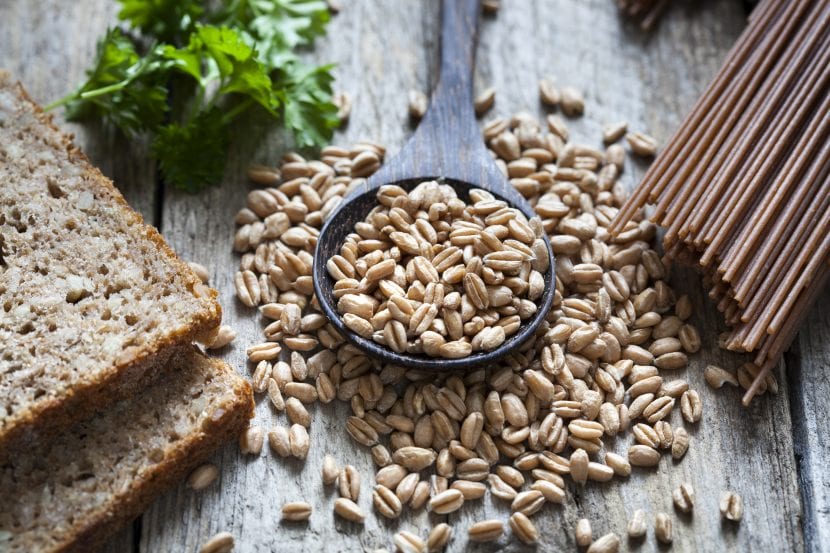Why whole grains?
Consider choosing whole grains the next time you sit down to a family meal. As a source of carbohydrates and fiber, they can fill you up and give you more energy for whatever lies ahead in your day. Their nutty taste can make for more flavorful meals – and introducing them when your children are still young can make for future adventurous eaters and lasting healthy habits.
What whole grains? See below!
You’ll see a * next to some of the grains listed. This means that they may or do contain the allergen, gluten. See below for more information.
Barley*
Oats
Oats are cheap, easy-to-use and easy-to-find grains used in cereals, bread recipes and to keep some recipes, like in bean burgers (recipes to come) or even homemade crackers from falling apart!
Oats contain a kind of fiber that is shown to lower blood cholesterol. They’re also a tried and true breakfast food. Enjoying breakfast with others is a healthy habit that brings the family together for a meal. Oats are a great way to work towards making half of your grains whole. If you’re on the go, try making overnight oatmeal!
Quinoa
Did you know that quinoa isn’t a grain but actually a seed? Still, it is included here because it is a superstar for flavor, texture, and color. And you can probably guess that it is nutritious, too! It is a good source of vitamins, minerals, and protein, just like any other whole grain. Quinoa comes in multiple colors. It can be used in both savory and sweet recipes, but to avoid bitter flavors, rinse the dry grains well before cooking them.
Buckwheat
Buckwheat is yet another grain-like seed with tons of health benefits! Buckwheat has helpful blood glucose lowering effects, which can be helpful for people with diabetes. It can be used to switch up your usual bowl of hot oatmeal; its’ flour can be used for breads, muffins, and cakes; and like other whole grains it can be used in soups or stews or as part of salads.
Farro*
Farro is an ancient grain which has become newly popular in the U.S., but its history dates back to the beginnings of civilization. In fact, it’s just a different variety of wheat. You might be surprised to learn that farro contains nearly twice as much fiber as more common whole grains. Farro also has lots of the B vitamins, and minerals like zinc and magnesium. If you can find it, farro is an earthy grain which works great in salads, bean stews, or as a rice substitute.
Brown or White Rice
White rice is the result of what happens when rice grains are stripped of the ‘shell’. Along with the shell, all the nutrients– fiber, B vitamins, and vitamin E — go along with it. In your next risotto, bean bowl, or stir-fry, consider choosing brown rice over white. And note: yellow rice is just white rice with coloring added to it!
What’s the difference between multigrain and whole grain? Products with the label ‘multigrain’ are just products with different grains used. The grains in these products are often stripped of their fiber and minerals during processing. Look instead for ‘whole grain’ products, or ‘whole wheat products’ if you don’t have wheat/gluten allergies.
Gluten free? If you are, be aware of the grains which may contain it, and check the packages of your whole grain products. They may have a label that tells you that they are gluten free. Most of the grains listed do not naturally contain gluten, but may come into contact with gluten during processing.







